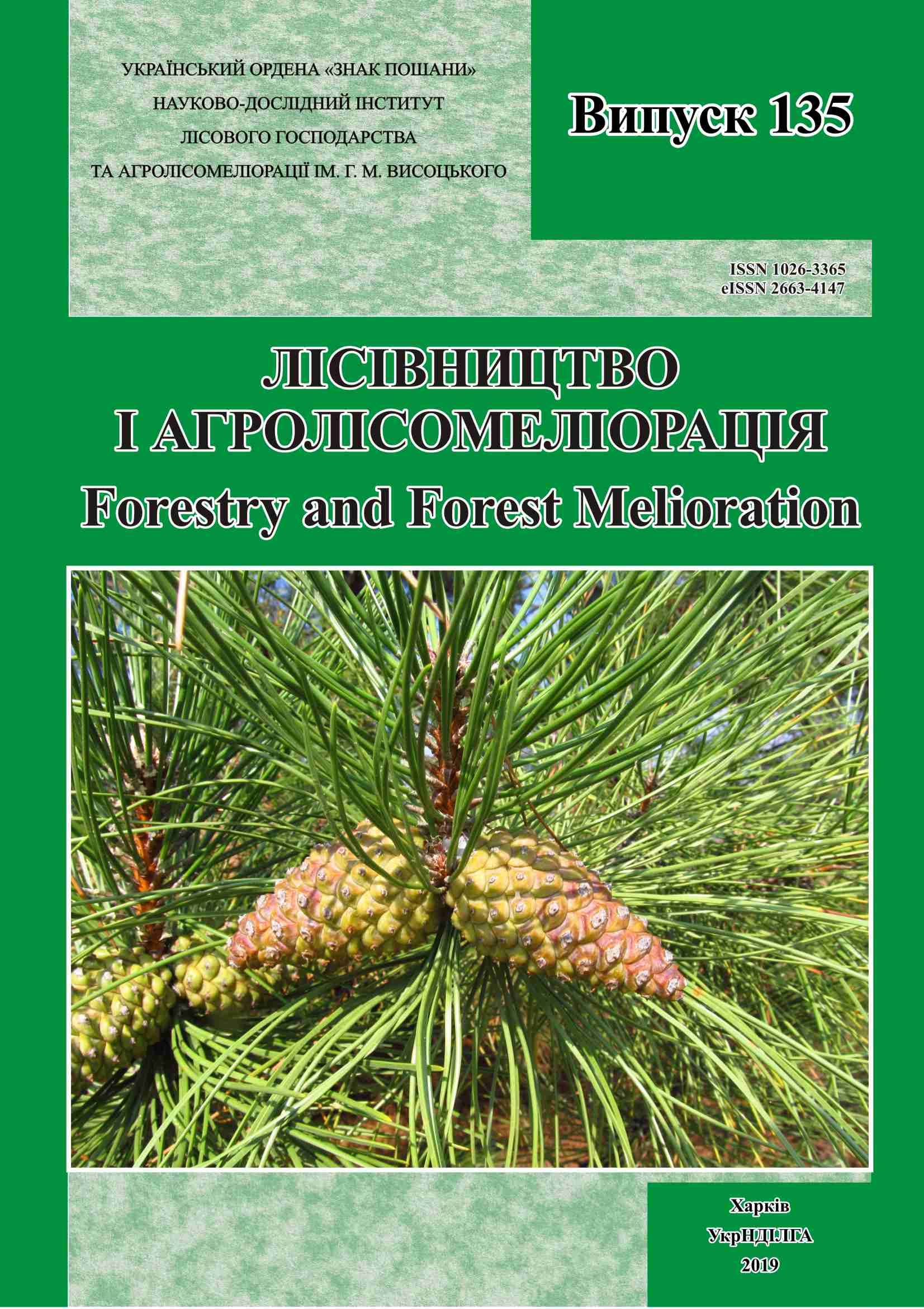Abstract
Introduction
One of the most important forest management measures for the reproduction of indigenous, productive, resistant and long-lived stands is the conversion of secondary and low-value stands. To replace low-value and secondary young stands with target ones, conversion felling and artificial regeneration of forests are implemented.
Materials and Methods
Peculiarities of the growth of Pinus sylvestris L., Picea abies (L.) Karst., Quercus robur L., Fraxinus lanceolata Borkh. were considered in the sites of conversion of low-value young stands by the corridor method. Experimental conversion felling was carried out in the 3-years-old aspen stand in 2005 and in 12-years-old birch stand in 2013. The width of both the corridors and the unfelled strips between the corridors during the conversion felling in aspen stands was 4 m and 6 m (1 and 1.5 of the stands’ height respectively). The direction of the corridors was from north to south. In a 12-year-old birch plantation, the width of the corridors was 6 m (one stand height), the width of the unfelled strips was 5 m. The directions of the corridors were meridional and latitudinal.
Results
For the first 5 years after the reconstruction, trees of Picea abies (L.) Karst. showed the best growth. After tending felling (first cleaning) in 2011 and 2014, during the prolonged dry periods, there was a decrease in the spruce trees height growth. Oak trees and pine trees were slightly behind compared to European spruce trees. It happened due to the expanding shade created by undesirable species in the unfelled strips between the corridors. In a 10-year-old planted oak stand, in 6-meter corridors, the average diameter and average height of trees were 1.3 times superior to those in 4-meter corridors due to better lighting.
Crowns of trees of the main species absorb 83–99 % of the light above the crowns. Improved water-physical properties of soils are created in the corridors compared to the left unfelled strips between the corridors.
Over the past 7 years, the average height of the oaks planted with seedlings 2–5 times exceeded that of oaks sown with acorns. The oaks in the variant with planting one row in the corridors of the meridional direction had the highest value of the average height due to the better light condition for the crowns.
Conclusions
Tending felling with the intensity of 34–50 % of growing stock in low-value young stands contribute to improving growth conditions of the main species and so, to their better growth.
1 Fig., 5 Tables, 9 Refs.
Key words: stand conversion, corridor method, low-value young stands, main species, height increment.
